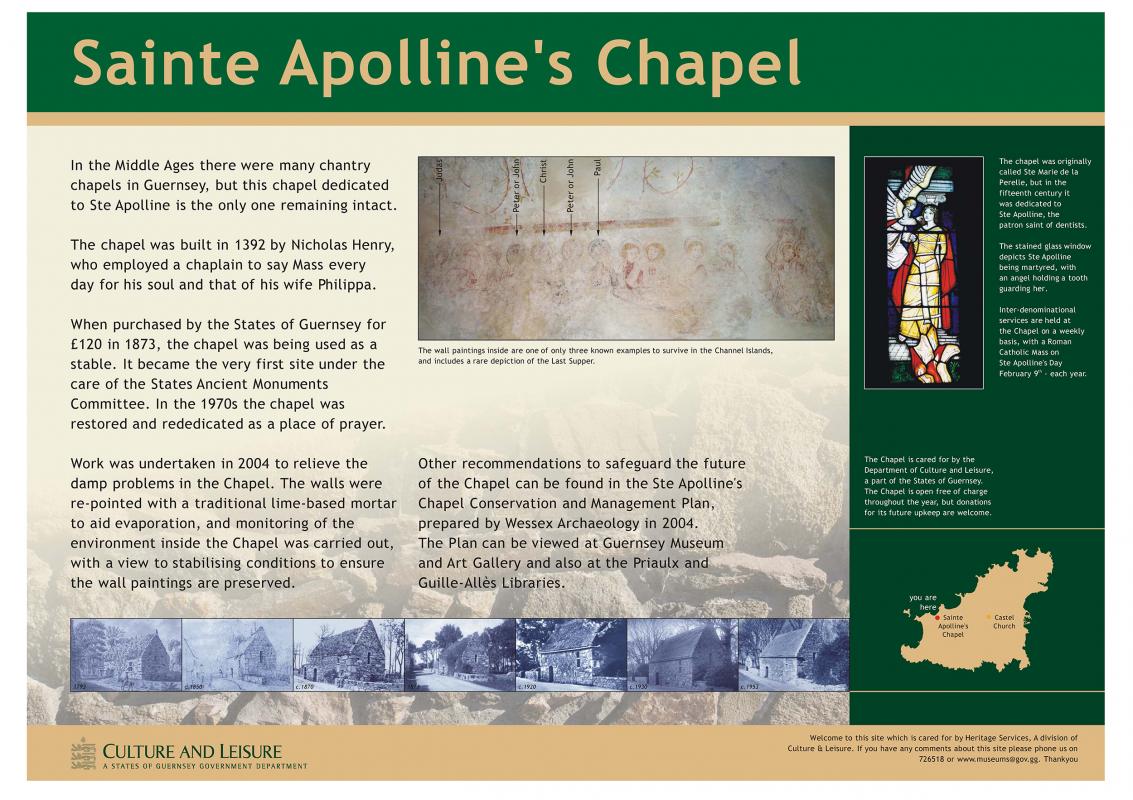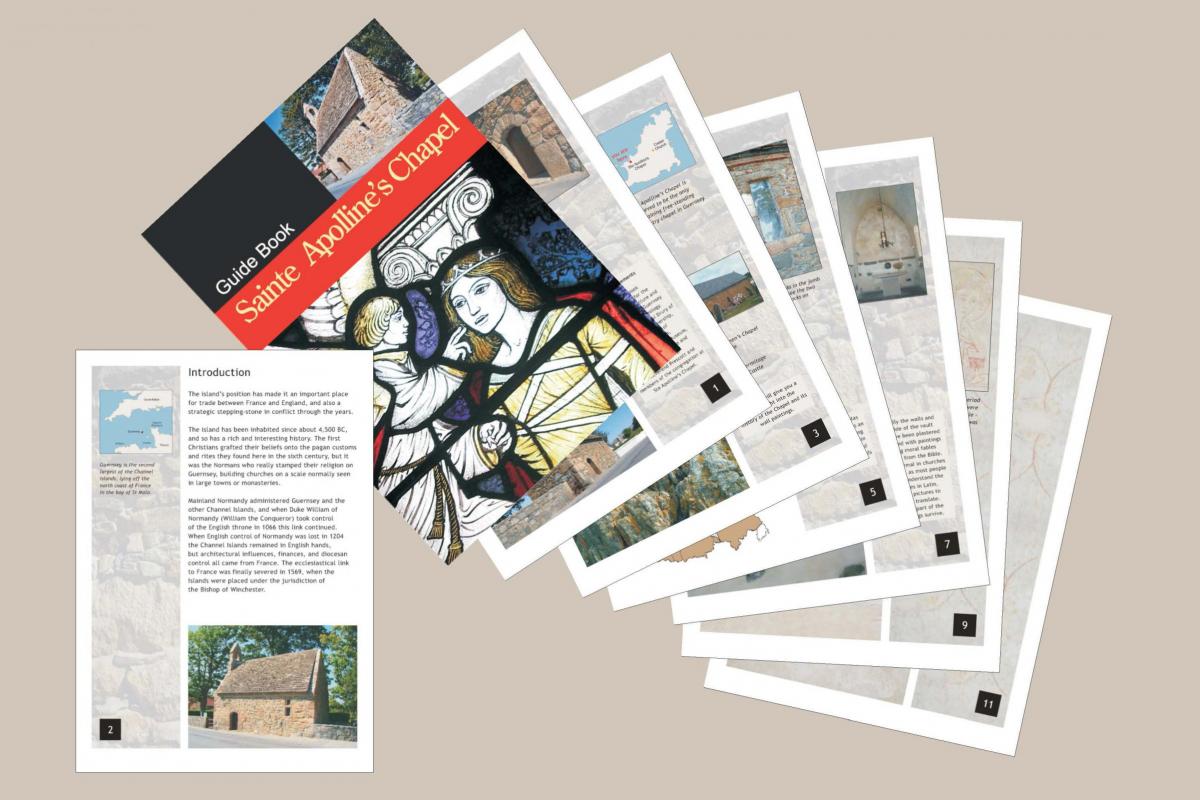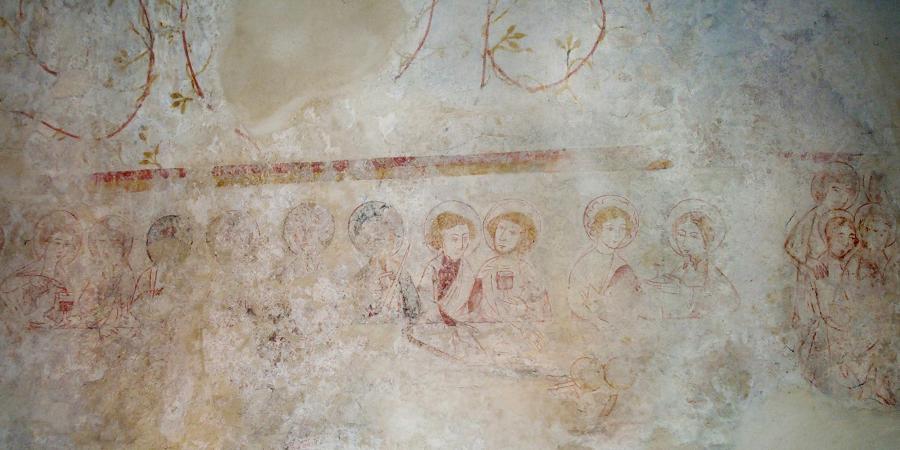A strategy to repair and conserve Guernsey’s first designated ancient monument, the 14th century Ste Apolline’s Chapel in St Saviour’s, was written by Wessex Archaeology in 2003.
The plan set out how the chapel, which has an important and beautiful wall painting depicting the Last Supper, can be protected from damp and conserved for the future.
Work on the Conservation and Management Plan for the chapel began with a visit to the site by a group of expert architects and conservators.
The chapel became the island’s first historic monument when the States of Guernsey bought it in 1873 for £120, when it was being used as a cow stable. This marked the beginning of official conservation on the island – the States later created an Ancient Monuments Committee, which is now the Heritage Committee, to care for Ste Apolline’s and other historic sites.
Ste Apolline’s was built by Nicholas Henry in the 1390s, near his manor of La Perelle. It was a chantry chapel, a place where a series of chaplains was appointed to say prayers daily for the souls of Nicholas and his wife Philippa during their lives and after their deaths. The chapel appears in records over the next five hundred years with different owners before being bought by the States.
The chapel was restored in 1972-1978, with a bellcote (a small structure housing a bell) under floor heating, and a new roof and lighting, but is still suffering from damp. Following expressions of concern about the chapel and its wall painting, the Heritage Committee decided to give priority to the site, and organised funding the work required.
Originally the Chapel was painted throughout and substantial areas of painting survive on the south wall. These show the Last Supper with Christ at the centre of the Apostles and next to them a partially preserved scene with four Apostles. In the Last Supper the figures are depicted talking in lively groups, except for Judas, who sits apart and is seen in profile. The choice of subject, the Last Supper, and its location on the wall next to the altar is unusual for the period and seems to be a local fashion. These paintings were made by two artists from the same workshop.
The painting has been degraded by damp but enough of the original paint remains for the disciples to be clearly visible. This wall painting along with a second in the parish Church of the Castel, are the only substantial church wall paintings to survive in Guernsey.
"Ste Apolline’s Chapel is the first ancient historic monument to be designated as such in Guernsey and is very important to the island’s cultural heritage” said Sandy Hamilton, the Heritage Committee’s Historic Sites Manager.
"It is essential that we conserve the chapel, and its historic wall painting, for the future, in a way that is in keeping with the chapel and its history."
"The conservation plan will not only look at immediate repairs, but also at the long-term future for the chapel, so that generations to come can appreciate it for its historical importance and religious significance."
"The work on the chapel, though important, is just part of the Heritage Committee’s task to protect and promote the 80 or so historic monuments on the island.”
The conservation plan set out what work was necessary on the chapel along with a timetable. A team of experts was assembled to write it, including the art historian John Mitchell, a senior lecturer in the School of World Art and Museology at the University of East Anglia.
Mr Mitchell said in his report that the wall painting had an unusual feature in that St Paul is depicted as being at the Last Supper, even though he was not present.
He is depicted as balding and bearded and carries a sword and a large book. He is shown with St Peter and together they represent the two pillars of the church.
St Paul is also depicted in the church of Notre-Dame at Savigny in Normandy and this led Mr Mitchell to believe that the painters of the Guernsey wall painting were from France.

Following on from producing the Conservation Management Plan, Wessex Archaeology's Studio worked closely with the client to create an onsite display panel which was sympathetic to the chapel. The as well as the information panel artwork our Studio designers also designed and typeset a 24 page booklet which is available for visitors from the Chapel.

The summary of the Draft Conservation and Management Plan, and the full Draft Conservation Plan are available for download (below).
